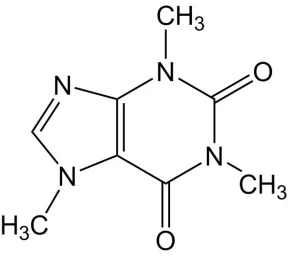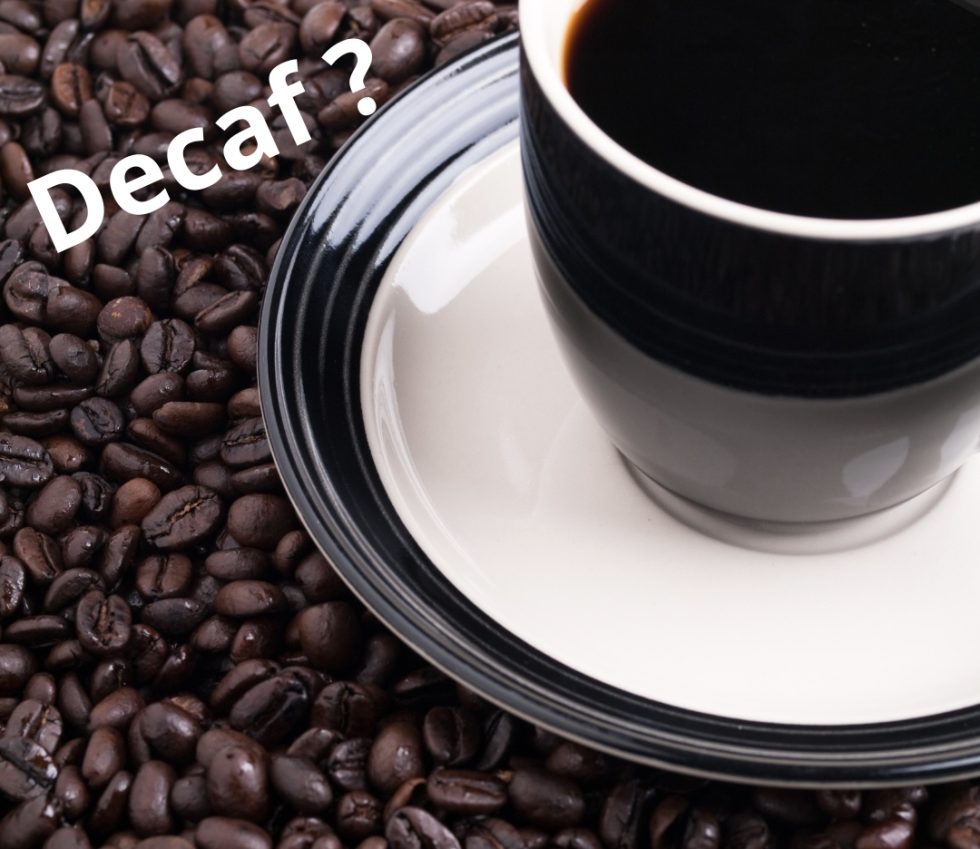The decaffeination process

The Caffeine Molecule
The first person to discover a practical method of decaffeination was the German, Ludwig Roselius. The head of the coffee company Kaffee HAG. And it was by accident. In 1903, a cargo of coffee on a ship had been flooded by sea water in transit.
A chemical dissolution process was used, and the caffeine was released, but without affecting the taste.
Roselius then devised an industrial method to repeat this feat. Cooking the beans with various acids before using the solvent trichloroethylene, chloroform or benzene to remove the caffeine.
Thus was born decaffeinated coffee, patented three years later.
Later it was discovered that benzene was a possible carcinogenic agent.
According to Chris Stemman, executive director of the British Coffee Association, most of the techniques developed at the time are still used today. But the process is not as simple as one might suppose.
Decaffeination happens when the coffee is still green before being roasted.
There are several ways to extract the caffeine:
Solvents for decaffeination
Generally, methylene chloride or ethyl acetate is used. Methylene chloride can be used as a paint thinner and a degreaser, as well as an agent to remove caffeine.
Ethyl acetate, on the other hand, is a natural fruit ether usually made from acetic acid. Essential in vinegar, and is also used to make nail polish remover. (it has a distinctive sweet smell, much like pear drops).
The beans are first soaked in water and then covered in a solution containing one of these solvents. Only then is the caffeine removed.
The solvent water is then reused over and over again until it is full of coffee aromas and compounds. They are practically identical to the beans, with the exception of the caffeine and the solvent.
At this stage of the process, the beans lose very little flavor because they are essentially soaked in a concentrated coffee essence.
Extraction for Carbon Dioxide

1- The liquid and the gaseous phase: the meniscus between liquid and gas is clearly visible.
2- As the temperature rises, the meniscus begins to disappear.
3- As the temperature increases, the specific masses of the gaseous and liquid phases become almost equal and the meniscus is no longer visible.
4- Once the Critical Temperature and Critical Pressure are reached, the separation between the two phases, liquid and gas, is no longer visible. There is a single phase that behaves like both a liquid and a gas.
This method was created in the decade of 1970 and it involves the use of carbon dioxide. In general, once the raw coffee beans are soaked in water and the desired moisture content in the beans is reached.
Then carbon dioxide is added to the beans and water under high temperature and pressure. The carbon dioxide binds to the caffeine molecule and removes it from the bean.
The caffeine-laden carbon dioxide is then mixed with water. This carries the caffeine away and the carbon dioxide is recycled to be used again.
The decaffeinated beans are subsequently dried and the residual carbon dioxide is removed from the beans. This decaffeination process produces a better quality product that preserves more of the coffee’s flavour than other methods. Due to the higher costs of this process, it is commonly used in commercial coffee decaffeination. It is the coffee packaged in larger factories by well-known brands. (Nespresso)
The Swiss Water Process
The Swiss method soaks the beans in water. The caffeine-rich solution (full of flavours) is then strained through activated carbon that captures the caffeine. The method began in Switzerland in the 1930s, and the process was first used commercially in 1979. It became popular because it was the first solvent-free method of its kind.
Decaffeination has become much more widespread as instant coffee has become a staple food, Stemman says.
And one thing instant coffee really doesn’t have is a coffee taste. Decaf is even worse.
Does Stemman drink decaf coffee? no. If I don’t want the caffeine, I’m just not going to have a cup of coffee.
And you, what you think about?
It is better to drink a good real coffee!



